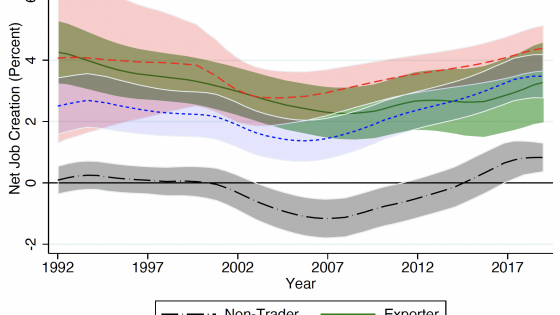DP2261 Gross Job Flows and Firm Growth in Transition Countries: Evidence Using Firm Level Data on Five Countries
In this paper we analyse job flows in five transition countries: Poland, Estonia, Slovenia, Bulgaria and Romania. Using comparable firm level data over the years 1993-1997, we find that in early transition job destruction dominates job creation, while the latter is picking up as the country enters into a mature stage of transition. Gross job reallocation rates in the more advanced transition countries are comparable to those of Western economies.
We show that the restructuring process is a very heterogeneous one in terms of job creation and destruction: Even in transition countries, hit by very large negative shocks, we find that within narrowly defined sectors, regions and firm size classes, there occurs a simultaneous creation and destruction of jobs. In addition, we find that most of the job reallocation occurs within sectors and regions, rather than across sectors and regions. We suggest that a measure for restructuring is the excess job reallocation rate and show that the excess job reallocation rate is positively correlated with the net employment growth rate at the sector and regional level.
Finally, we find that ownership and firm size are the most relevant characteristics for understanding the dynamics of job flows. Foreign firms have higher job creation and higher excess job reallocation rates, while small businesses are the most dynamic in terms of job reallocation. We investigate the job reallocation process at the firm level and test for trade orientation, ownership and size effects. The results show that firm growth depends on ownership and initial size. Trade orientation effects are important for countries in early transition but not for countries in a more mature stage of the transition process.


